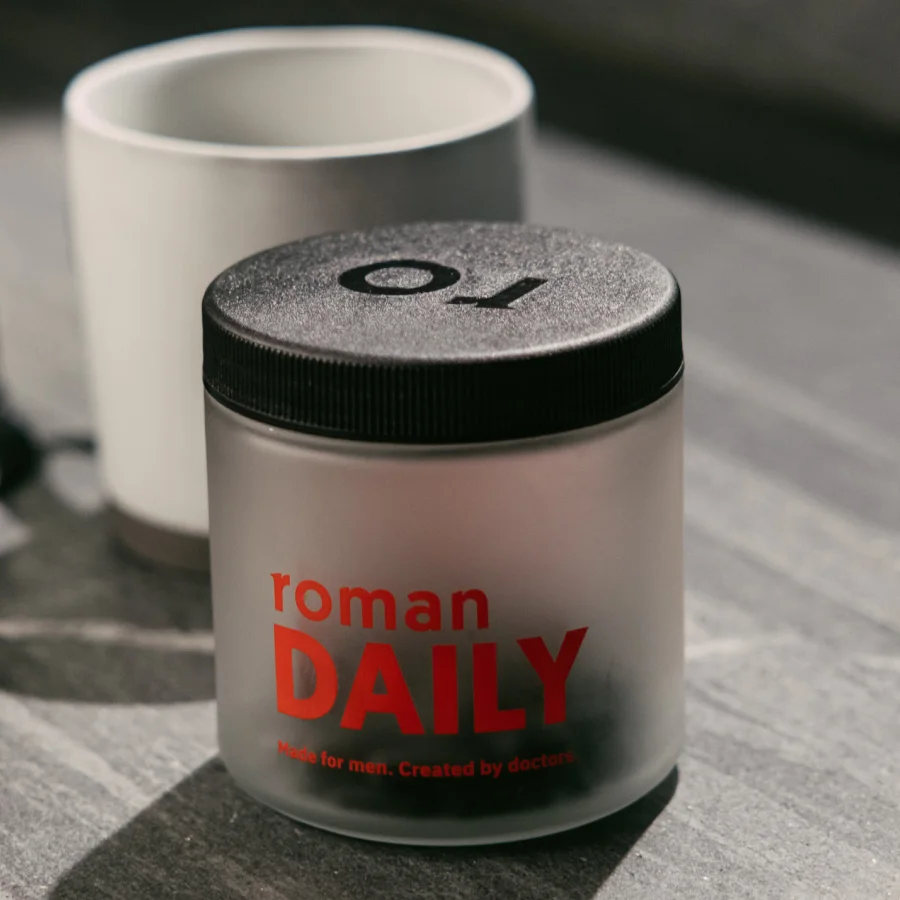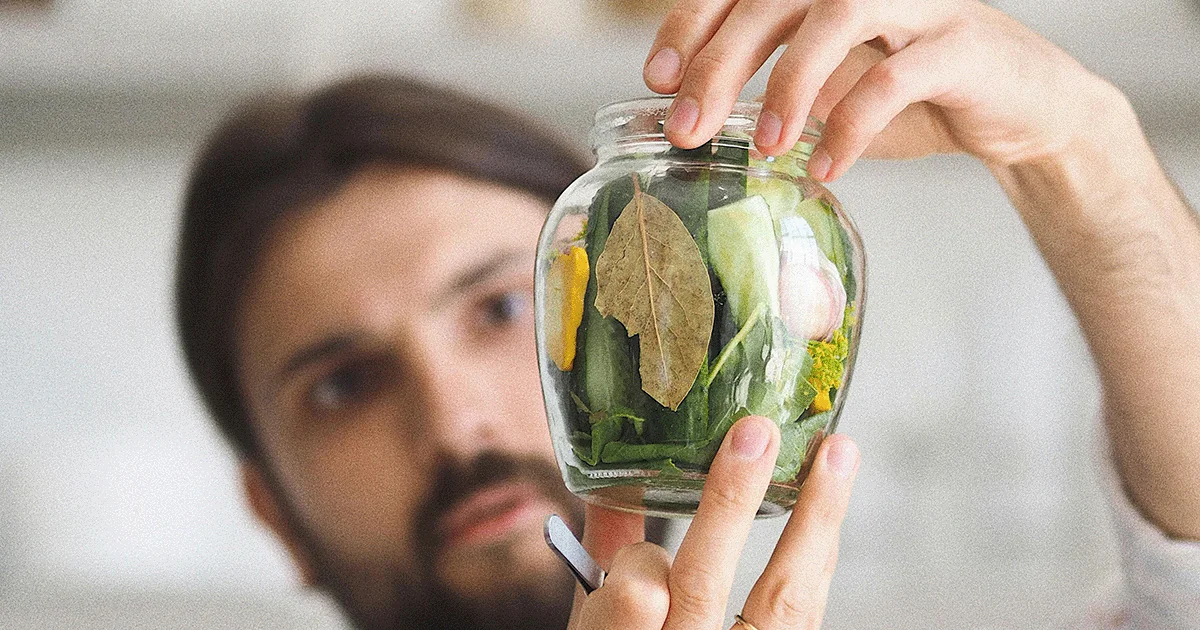Here's what we'll cover
Here's what we'll cover
You know how important it is to eat your fruits and veggies every day, but you may not always know which foods provide you with which essential nutrients. Folic acid—a synthetic form of folate—is another name for vitamin B9, an important nutrient for cell growth. Some foods are abundant in folate, while others have folic acid added to them. Keep reading to learn about food sources of folic acid and folate and how much you need each day.
Folic acid foods
Since folic acid is artificially produced, it isn’t naturally found in any foods. To help reduce the number of congenital anomalies caused by folate deficiencies, the government began requiring manufacturers to add folic acid to some types of food.
Food manufacturers use a process called fortification to add vitamins and minerals to foods during food processing. With this process, they can add a variety of micronutrients, like vitamin D, calcium, and folic acid, to the fortified foods.
Many breakfast cereals are fortified to provide a consistent amount of folic acid in each serving (USDA, 2019).
Here are some of the foods that are often enriched with folic acid:
Fortified grains products, whole grains, and flour
Bread and pasta
Rice
Corn and cornmeal
Fortified cereals and oatmeal
Folate foods
If you focus on eating a variety of whole foods, you may be able to meet your daily folate needs through your diet alone. Here are some of the foods sources of folate:
Green leafy vegetables
Dark leafy green vegetables are widely promoted as one of the healthiest foods because they are low in calories and loaded with vitamins, minerals, and fiber.
For example, one cup of raw green cabbage provides about 38 mcg of folate, 22 calories, 2 grams of fiber, 153 mg of potassium, 69 mcg of vitamin K, 87 IU of vitamin A (USDA, 2019).
In addition to being an excellent dietary source of folic acid, green leafy vegetables are good for other areas of your health. A 2018 study found that just one serving of green leafy vegetables per day helps to lower the cognitive decline common during aging (Morris, 2018).
Other examples of green leafy vegetables include:
Spinach
Kale
Arugula
Romaine lettuce
Brussels sprouts
Brussels sprouts are a type of cruciferous vegetable, similar to leafy greens.
One cup of cooked brussels sprouts provides about 84 mcg of folate and only 70 calories, plus fiber, magnesium, phosphorus, vitamin A, choline, lutein + zeaxanthin, and more. There is just about 20% of your daily value for folate in just one cup of cooked brussels sprouts.
In addition to providing folate, the lutein and zeaxanthin found abundantly in brussels sprouts are powerful antioxidants, meaning they help protect your cells from damage and lower inflammation. Research suggests that lutein and zeaxanthin may help protect against cataracts, macular degeneration, coronary heart disease, and stroke (Murillo, 2019).
Broccoli
Broccoli is a popular non-starchy vegetable known for being an excellent source of many vitamins and minerals.
One half cup of cooked broccoli provides about 84 mcg of folate, which makes up around 20% of the recommended amount of folate needed each day. It also contains fiber, potassium, choline, vitamin A, lutein + zeaxanthin, and vitamin K (USDA, 2019).
Research suggests that the vitamins, minerals, and antioxidants present in broccoli may help lower the risk of developing some types of cancer (Latte, 2011).
Beans and legumes
Beans and legumes are popular choices in vegan and plant-based diets because they are high in protein.
As an example, one cup of canned chickpeas provides over 30% of your daily folate needs, with 121 mcg of folate. It also contains a significant amount of protein and fiber, as well as other healthy nutrients. (USDA, 2019). .
Another member of the legume family may be the best food source of folate of all—lentils. Eating just one cup of cooked lentils provides almost 300 mcg of folate, which is about 90% of the daily recommendations (USDA, 2019).
Here are some other beans and legumes high in folate and other nutrients:
Navy beans
Black-eyed peas
Lentils
Kidney beans
Citrus fruits
Usually, when people talk about the vitamins in citrus fruits, they focus on the abundance of vitamin C. But they’re also a good source of folate and other antioxidants.
One medium mango provides 144 mcg of folate (about 36% of your daily folate needs), along with fiber, potassium, vitamin A, vitamin C, and more.
You can even consume folate by drinking fruit juice. For example, 8 ounces of orange juice can provide a helpful amount of folate (USDA, 2019). Just watch out for the high sugar content in fruit juices.
Here are some other citrus fruits high in folate:
Oranges
Grapefruit
Kiwi
Papaya
Avocado
Avocado is another fruit high in folate. Its creamy texture and savory flavor make avocados useful for a variety of cooking methods, like mixing into a dip, spread, or adding to smoothies.
One medium avocado provides about 121 mcg of folate (around 30% of your daily folate needs!), 230 calories, 9 grams of fiber, 690 mg of potassium, 40 mg of magnesium, and 3 mg of vitamin E (USDA, 2019).
Avocados are mostly made of unsaturated fats, which are considered a heart-healthy fat. Research suggests that eating more unsaturated fat and lowering saturated fat intake helps to promote heart health and reduce cardiovascular disease risk (Dreher, 2013).
Can you get enough folate through diet alone?
It’s possible for you to eat enough folate through your diet if you focus on eating whole foods.
However, some people struggle to meet their folate needs through their diet alone. In addition, it can be challenging to know if you’re getting enough unless you’re tracking all of the folate in your food.
Because of the risks of a folate deficiency for neural tube defects, it’s often recommended for women of childbearing age to take a multivitamin or folic acid supplement to prevent this condition. Talk with your healthcare provider to see if a dietary supplement may be the right option for you.
What is folic acid vs. folate?
Folic acid is a synthetically produced version of vitamin B9, while folate is naturally occurring in several different types of food, including those listed above. Vitamin B9 is a water-soluble vitamin that has many essential roles in the body, including (Khan, 2021):
Cell division and growth
Healthy DNA growth
Production of red blood cells
Fetal growth
The recommended dietary allowance (RDA) for folate is about 400 micrograms (mcg) for adults, 600 mcg for pregnant women, and 500 mcg for breastfeeding women. For people with deficiencies or who are at a higher risk for a deficiency, your healthcare provider may recommend doses between 1 to 5 milligrams (Khan, 2021).
Folic acid deficiency
You can’t actually have a folic acid deficiency, since folic acid is produced in a lab. A folate deficiency, though, may lead to side effects and conditions, like (Khan, 2021):
Anemia: A lack of folate may impact red blood cell production, causing megaloblastic anemia. Symptoms may include fatigue, breathlessness, pale skin, headaches, and irregular heartbeats.
Neural tube defects: Folate’s role in cell division helps with fetal growth and neural tube development. A folate deficiency during early pregnancy may lead to the development of spina bifida or anencephaly.
Often, vitamin supplements are recommended for women of childbearing age, breastfeeding women, and pregnant women to support growth and prevent congenital anomalies. Talk with your healthcare provider about what multivitamin or prenatal vitamin is right for you.
DISCLAIMER
If you have any medical questions or concerns, please talk to your healthcare provider. The articles on Health Guide are underpinned by peer-reviewed research and information drawn from medical societies and governmental agencies. However, they are not a substitute for professional medical advice, diagnosis, or treatment.
Dreher, M. L., & Davenport, A. J. (2013). Hass avocado composition and potential health effects. Critical Reviews In Food Science And Nutrition , 53 (7), 738–750. doi: 10.1080/10408398.2011.556759. Retrieved from https://pubmed.ncbi.nlm.nih.gov/23638933/
Khan, K. M. & Jialal, I. (2021). Folic acid deficiency. [Updated 2021 Sep 28]. In: StatPearls [Internet]. Retrieved on Nov. 2, 2021 from https://www.ncbi.nlm.nih.gov/books/NBK535377/
Morris, M. C., Wang, Y., Barnes, L. L., Bennett, D. A., Dawson-Hughes, B., & Booth, S. L. (2018). Nutrients and bioactives in green leafy vegetables and cognitive decline: prospective study. Neurology , 90 (3), e214–e222. doi: 10.1212/WNL.0000000000004815. Retrieved from https://pubmed.ncbi.nlm.nih.gov/29263222/
Murillo, A. G., Hu, S., & Fernandez, ML. (2019). Zeaxanthin: metabolism, properties, and antioxidant protection of eyes, heart, liver, and skin. Antioxidants , 8 (9), 390. doi: 10.3390/antiox8090390. Retrieved from https://www.ncbi.nlm.nih.gov/pmc/articles/PMC6770730/
Latté, KP., Appel, KE., & Lampen, A. (2011). Health benefits and possible risks of broccoli - an overview. Food And Chemical Toxicology: An International Journal Published For The British Industrial Biological Research Association , 49 (12), 3287–3309. doi: 10.1016/j.fct.2011.08.019. Retrieved from https://pubmed.ncbi.nlm.nih.gov/21906651/
US Department of Agriculture. (2019). FoodData Central. Retrieved from https://fdc.nal.usda.gov/index.html












